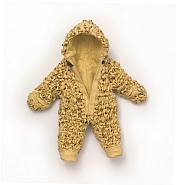The TED Conference has a reputation for attracting and honoring international dignataries, prize-winning scientists, and even rock stars. Always keen to shake things up, it’s giving its top honor — the TED Prize — to a graffiti artist. The 27-year old Parisian known publicly only as JR has been awarded the $100,000 prize.
 Taking his work to the streets, JR photographs people living in poverty-stricken areas around the world. Then he enlarges the portraits and posts them (often illegally) on rooftops, building walls, or wherever he sees fit. His work has “shown” around in the world – including Kenya, Brazil, and China – on walls, broken bridges, and in slum villages.
Taking his work to the streets, JR photographs people living in poverty-stricken areas around the world. Then he enlarges the portraits and posts them (often illegally) on rooftops, building walls, or wherever he sees fit. His work has “shown” around in the world – including Kenya, Brazil, and China – on walls, broken bridges, and in slum villages.
In addition to the money, JR also gets “One Wish to Change the World” – an opportunity to create and lead a philanthropic project, funded by the TED community and staff, and Sapling Foundation. When asked what his “wish” will be, JR told The Independent, “I go to local communities, forgotten communities or antagonistic communities, and try to energize them and bring them together and make them think, through the medium of art. I would want my ‘wish’ to be something like that, but on a global scale.” He will present a plan for how to do that at next year’s TED Conference.
Past winners of the TED prize include Jamie Oliver, Bono, and Bill Clinton.
You can see a great slideshow of JR’s work here.
-Georgette Pierre











